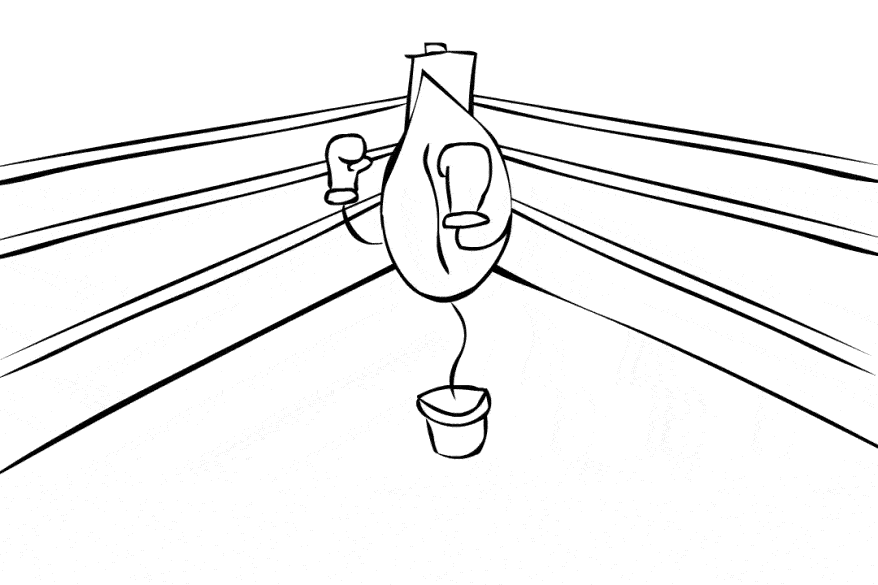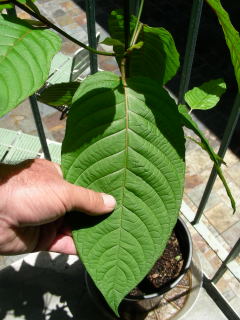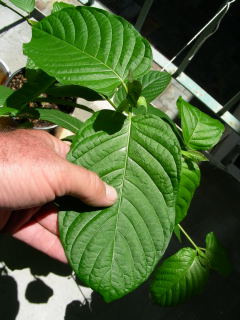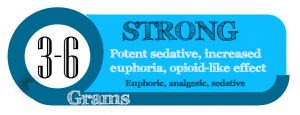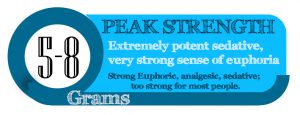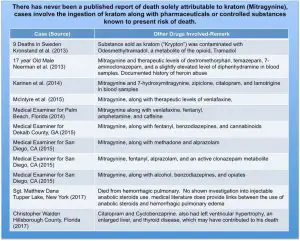The fight for Kratom has ramped up again, except this time a new contender enters the ring.
Kratom Vs The FDA
For those unaware, in August of last year, Kratom advocates woke up to the news that the DEA would temporarily reclassify Kratom as a ‘schedule 1’ drug, which resulted in massive backlash.
Public demonstrations, along with 120,000 signatures and ceaseless calls to local congressmen and women, forced the organization to call off the immediate ban and wait for further comment.
Most Kratom advocates assumed that they were in the clear, that is until November 14th of this year; when the even larger, more powerful FDA made a public statement deriding Kratom as a “harmful unapproved product”, which has “significant safety issues associated with its use“.
Although no direct call to ban or suspend the herb was issued, the FDA is already confiscating major shipments of Kratom, along with advising health boards to implement a ban on the local level. As you can expect, this sparked another massive volley of backlash. And as Kratom advocates gear up for battle once again, a critical question remains to be answered:
Does Kratom have medicinal value?
FDA commissioner, Scott Gottlieb, says no. Written in his open letter:
“there are currently no FDA-approved therapeutic uses of kratom. Moreover, the FDA has evidence to show that there are significant safety issues associated with its use.”
This statement is, of course, profoundly unscrupulous and written in such a way as to avoid addressing the considerable body of science that corroborates Kratom’s therapeutic benefits.
But we shouldn’t be too surprised; according to the Journal of Law, Medicine and Ethics: “90 percent of all new drugs approved by the FDA over the past 30 years are little or no more effective for patients than existing drugs”. Not to mention, every week roughly 53,000 people are hospitalized and 2,400 more die from “taking properly prescribed drugs to be healthier.”, according to sociologist Donald Light of Harvard.
It seems that the FDA – and Scott Gottlieb in particular – are more interested in outlawing an herb with not a confirmed death to its name, rather than fixing an organization that has committed an array of destructive errors. Shameful.
There is one line in the FDA’s letter that is on some level, commendable:
“While we remain open to the potential medicinal uses of kratom, those uses must be backed by sound-science and weighed appropriately against the potential for abuse. They must be put through a proper evaluative process that involves the DEA and the FDA. To those who believe in the proposed medicinal uses of kratom, I encourage you to conduct the research that will help us better understand kratom’s risk and benefit profile, so that well studied and potentially beneficial products can be considered.”
Assuming that the FDA keeps their word, this could be a golden opportunity for a batch of even more stringent Kratom research.
Until then, it’s important for us to understand why this herb is worth protecting and why ANY infringement on it, is seriously detrimental for the thousands of people who use it, everyday; mainly for therapeutic purposes.
Kratom’s notorious wrap as a ‘legal high’, may be the most destructive baggage it carries. It’s essentially a bad P.R. colloquy, which gives incompetent government agencies and politicians alike, an ‘in’ for misunderstanding, then scheduling it. We have to be more capable in our defense of Kratom, and that starts with understanding how it works, its history, chemical compounds and legitimate down sides. Here’s what we know about The FDA’s number 1 target.
What is Kratom?
So, Kratom is a leafy equatorial evergreen tree in the Rubiaceae, or coffee family. It is found growing in abundance within the muggy jungles of Thailand, Myanmar, Malaysia, Papua New Guinea and Indonesia – where it has been used for hundreds of years within traditional medicine. The tree itself stands anywhere from 10 to 50 feet tall and is occupied by large, droopy, feather-shaped leaves; which are usually smoked, chewed, or brewed into tea for their psychoactive alkaloids.
In Western writings, Kratom was first documented by Peter Willem Korthals, the official botanist for the Dutch East India Service from 1831 – 1836. He found that rural workers and peasants in Malaysia, used Kratom as an opium substitute and a work efficiency enhancer.
These contradicting attributes garnered a slew of attention from plant researchers in the late 19th and early 20th century; this includes L. Wray, an ethnopharmacologist who worked for the University of Edinburgh in 1907. Wray found that at large doses, Kratom could cause a state of insensibility and wrote that frequent use would lead to an “indolent life”.
Wray also sent Kratom leaves back to the University of Edinburgh; where 14 years later, medical chemist Ellen Field, isolated the predominant alkaloid within Kratom, Mitragynine – a chemical we will detail later.
Today, Kratom is sold as an herbal supplement, used for therapeutic and recreational purposes.
Kratom High
The first proper investigation into Kratom’s effects on humans was carried out by Pharmacologist, K.S. Grewal, in March of 1932. Grewal found that mitragynine, Kratom’s most abundant alkaloid, is a central nervous system stimulant; somewhat similar to cocaine (similar in chemical constituents, not necessarily effects). He eventually carried out a small study, administering very low doses of kratom leaf (anywhere from 0.65 – 3 grams), to five men and noticed, once again, a strong stimulant effect in all participants.
Although Grewal’s study was imperative for the time period, it failed to dive deeper into what makes Kratom so unique: its variance at different doses.
Kratom Doses
Threshold Dose

Moderate Dose
2 – 4 g: Most users will recommend this dose. Towards the lower end, Kratom’s stimulant effects reach a peak, while the upper half is where Kratom’s unintuitive, sedative nature kicks in. The best way to describe it may be, half a xanax and 2 
Strong Dose
3 – 6 g: This is where Kratom starts turning into, what feels like, an opioid. Strong waves of euphoria, mixed with sedation, come in full blast. You may also experience ‘the wobbles‘ or stomach troubles, especially if you’re an inexperienced user. This dosage is especially useful for those with chronic pain issues.
The Highest Dose
5 – 8 g: Effects don’t really become stronger past this point. In fact, if you’re consuming powdered Kratom – which most users do – you’ll probably throw up.
It’s here that Kratom’s sedative and euphoric nature is fairly overwhelming. Depending on your tolerance, you’ll probably feel the need to lay down and relax; while any work you were hoping to get done, will be immediately put on hiatus until the following day.
This is, of course, a very rough guide to dosing. Psychoactive substances effect different people in different ways – and with Kratom, there are a variety of different strains that supposedly have varying effects (although I personally feel absolutely no difference between any given one).
How Does Kratom Work?
Kratom has one of the more unique chemical profiles within the world of medicinal herbs: possessing over 20 alkaloids, which range from powerful anticoagulants to soothing muscle relaxants. A few notable ones include:
Epicatechin: A powerful antioxidant flavonoid commonly found within green tea; often sold as an individual Nutraceutical.
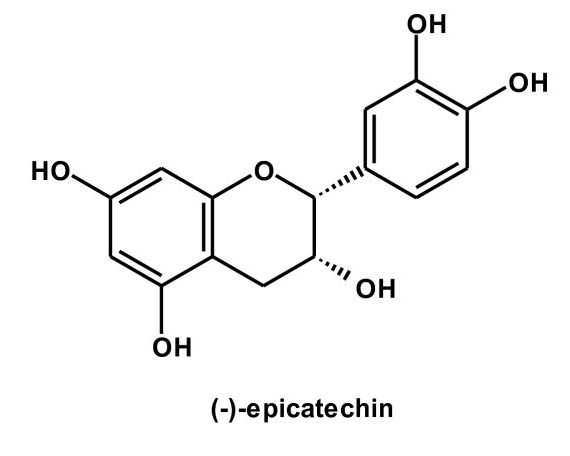
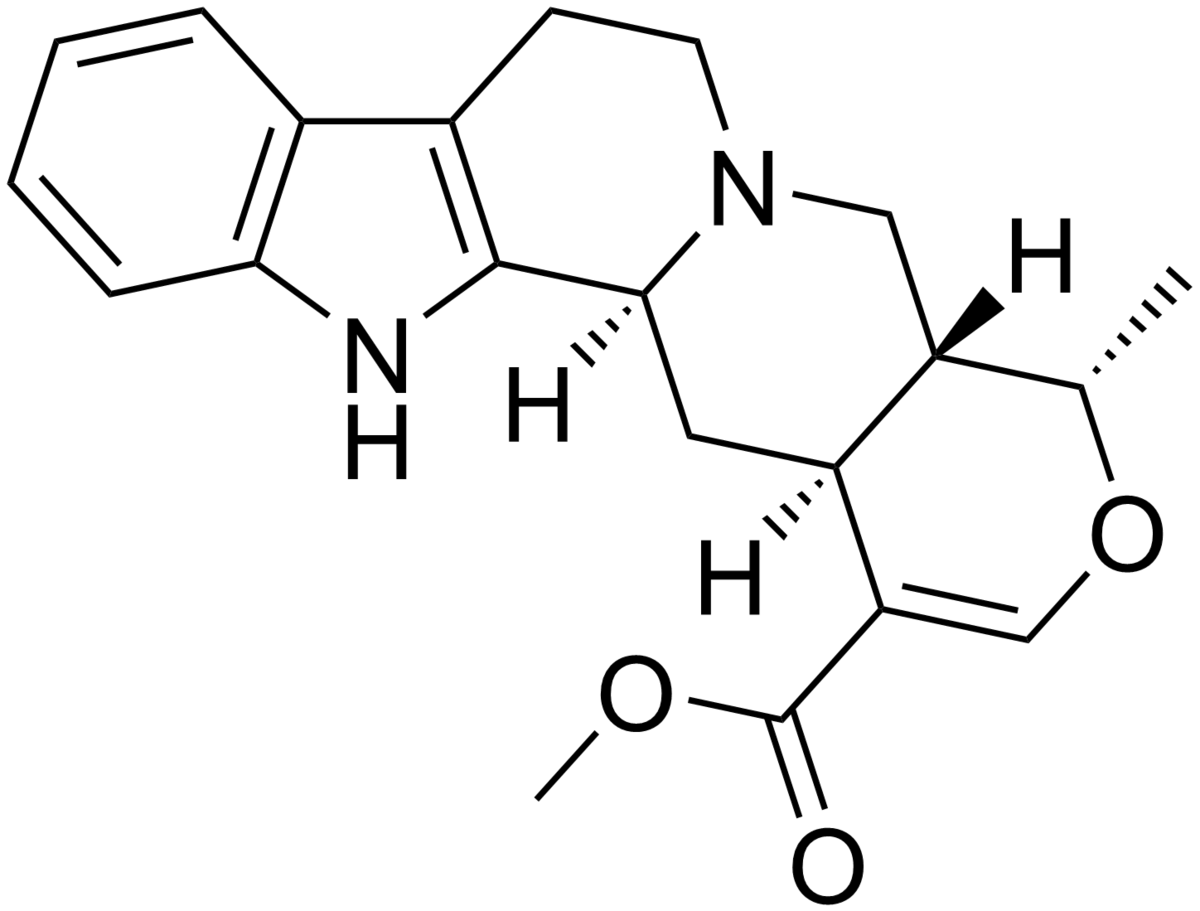
We know very little about the majority of Kratom’s alkaloids – besides the very basics (chemical composition and basic functions).
However, there are two psychoactive power-players in particular, that have been studied a fair amount. Both of which spark some of Kratom’s most contentious, yet valued properties:
Mitragynine
Mitragynine is Kratom’s most abundant alkaloid, constituting roughly 70% of all alkaloids found within Kratom. It acts on the μ-opioid receptors of the brain as a partial agonist, which is a key part of its effectiveness and a substantial reason why so many substance abusers find it useful for tapering off of opioids like heroin or oxycodone. Let’s quickly look at how agonists work.
Agonist Pharmacology
There are many different types of agonists, but to understand Mitragynine’s effects on the brain, we only really need to know about two: the full agonist and the partial agonist.
A partial agonist: (like Mitragynine) is any drug that activates the receptor sites of neurotransmitters, but with partial efficacy. Efficacy refers to the ability of any given drug to produce a full functional response. Think of it as a way for researchers to differentiate the responses caused by various agonists. Partial agonists are in a sense ‘weaker’ than full agonist.
A full agonist: on the other hand, elicits the maximum response from a receptor.
Now, drugs like oxycodone and morphine happen to be full agonists of the μ-opioid receptors; which is why they are so commonly abused. They create a strong response from the μ-opioid receptors, compared to partial agonists, which in turn creates a powerful high with more severe side effects; as well as an increased chance of dependence.
So then, this is where partial agonists – like Mitragynine – shine. They produce a response that is chemically weaker than full agonists, which leads to a less powerful high; which in turn dramatically reduces side effects.
7-Hydroxymitragynine
Also a partial agonist of the μ-opioid receptor, 7-Hydroxymitragynine is well known for its potency: which is roughly 30 times stronger than Mitragynine and 17 times stronger than morphine. It’s a good thing then, that it’s found in extremely small amounts within Kratom leaves. There’s enough of it to cause a substantial high, but not enough to onset any serious side effects.
7-Hydroxymitragynine has powerful pain killing and sedative effects, but provides no stimulation like Mitragynine. This, in part, is what makes Kratom’s ‘high’ so unique.
Is Kratom Safe? What are the Side Effects?
This is probably the most asked question about Kratom. With the DEA, and now FDA’s fear mongering, the general public is left with the impression that Kratom is some dangerous legal high. A plant so threatening that, if not swiftly banned, will leave communities shattered and families broken – reminds you of a certain, current crisis, doesn’t it?
According to the FDA’s press announcement, Kratom is responsible for 36 deaths. But like the majority of their statements on this topic, that’s completely misleading.
As you can see from the chart above, every single death that the FDA attributes to Kratom, was accompanied by other narcotics.
Not to mention, a huge cause of death from misusing opioids is respiratory depression. Full opioid agonists, like heroin, morphine and fentanyl, directly affect breathing by activating μ-opioid receptors at very specific sites within the central nervous system. This includes a group of neurons that play a vital part in controlled breathing called the Botzinger Complex.
Partial opioid agonists like, Mitragynine, are governed by transfer to the receptor sites, through receptor kinetics and receptor signaling. Meaning Mitragynine and 7-Hydroxymitragynine, do not cause respiratory depression.
Some of Kratom’s side effects may include:
- Constipation
- Insomnia
- Dry mouth
- Sedation
- Increased urination
Remember, psychoactive substances affect everyone differently. Start at the lowest, threshold dose, then work your way up from there.
Also remember, Kratom is largely an unregulated substance. You need to purchase from trustworthy vendors: read through vendor reviews from any of the major Kratom forums to find an honest one that suits you.
Is Kratom an Opiate?
We have to distinguish between two very different terms: opiate and opioid. Opiate, is a fairly antiquated term; it means any drug that is derived from opium poppy. Narcotics like Fentanyl, Tramadol, and Meperidine are all powerful pain killers which act on the μ-opioid receptors, but are not derived from the opium poppy plant; therefore they are not opiates.
However, they are opioids: which is any chemical stimulant that acts on any of the four opioid receptor sub-types. This includes Kratom’s two major psychoactive alkaloids: Mitragynine and 7-Hydroxymitragynine.
You can probably already see the major issue here. Bad actors and deceitful government agencies, can very easily lump Kratom into the same category as a drug like Fentanyl, with no further explanation needed. I think it serves our cause better if we use the word ‘herb’, when describing Kratom.
A Kratom Ban
I’ll be outright. A ban on Kratom would kill hundreds, if not thousands of people.
#kratom has helped give me 440 days of freedom from a decade long pill addiction. I’m luck to have found this plant. Not everyone gets out alive. #kratomsaveslives #keepkratomlegal #iamkratom
— John Paulsen (@KUfan648) December 10, 2017
Activists are not trying to keep this herb legal for ‘fun’.
I AM no longer bedridden
I AM no longer a prisoner to #Opiates for #ChronicPain
I AM once again the mother my children deserve
I AM living a life I NEVER thought I would see again
🌿 I 🌿 AM 🌿 #KRATOM 🌿 pic.twitter.com/CGkesiXoxN
— //Jen // (@ladypain1113) December 7, 2017
Or because they’re slackers who want to get high.
#FDAWarOnKratom @SGottliebFDA FDA is trying to take away our rights as adult Americans to chose what to put into our bodies. If #kratom is banned many of us will see our quality of life significantly decrease. #IamKratom #keepkratomlegal #KratomSavesLives
— Kirsten Conway (@LaFouRoux) December 11, 2017
Or even for political reasons or civil liberties.
Please. I’m doing all I can. My family is so glad to have me back. Kratom has given me my life back. Don’t turn me into a criminal for this. What is happening to any level of freedom for adults? @realDonaldTrump https://t.co/Sr6ESRo1TF
— Kenny Wootton (@Lord_Wonton) December 16, 2017
No, activists are fighting for Kratom, because it’s one of the very few safe alternatives to prescription painkillers left. This is not a plant that ‘could’ or ‘might’ save lives; it actually is saving lives. Every single day.
Maybe as a Christmas gift, you could help keep Kratom legal for those who need it. Call your representatives.
Thanks for reading.
I’m @herbexaminer on Twitter – That’s the fastest way to reach me.
Sources:
- Jansen, Karl L.R., and Colin J. Prast. “Ethnopharmacology of Kratom and the Mitragyna Alkaloids” Journal of Ethnopharmacology 23 (1988): 115-119
- EMCDDA | Kratom profile (chemistry, effects, other names, origin, mode of use, other names, medical use, control status)
- Anderson, L. “Kratom: Uses, Effects, Hazards & Abuse Potential.” Drugs.com, Drugs.com, Oct. 2017, www.drugs.com/illicit/kratom.html.
- Karch, Steven B. Karch’s Pathology of Drug Abuse. Print

